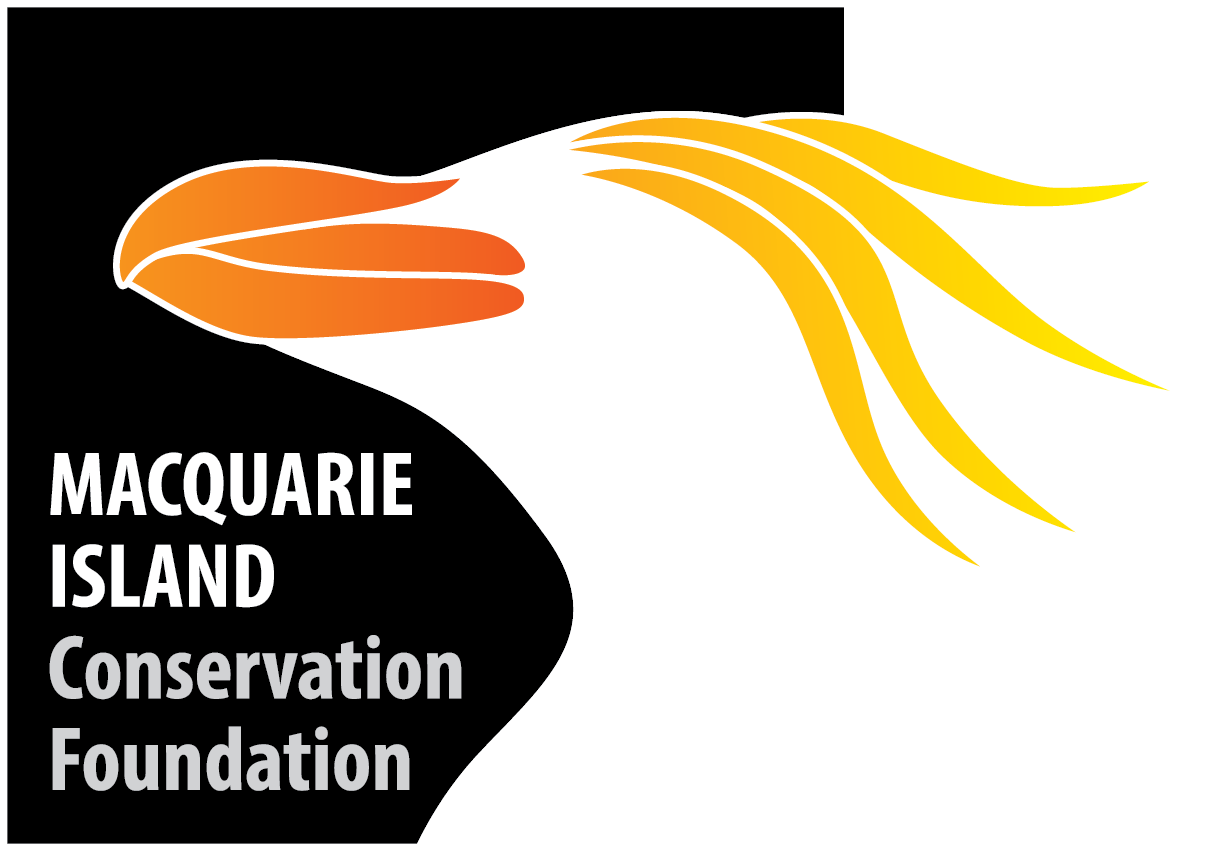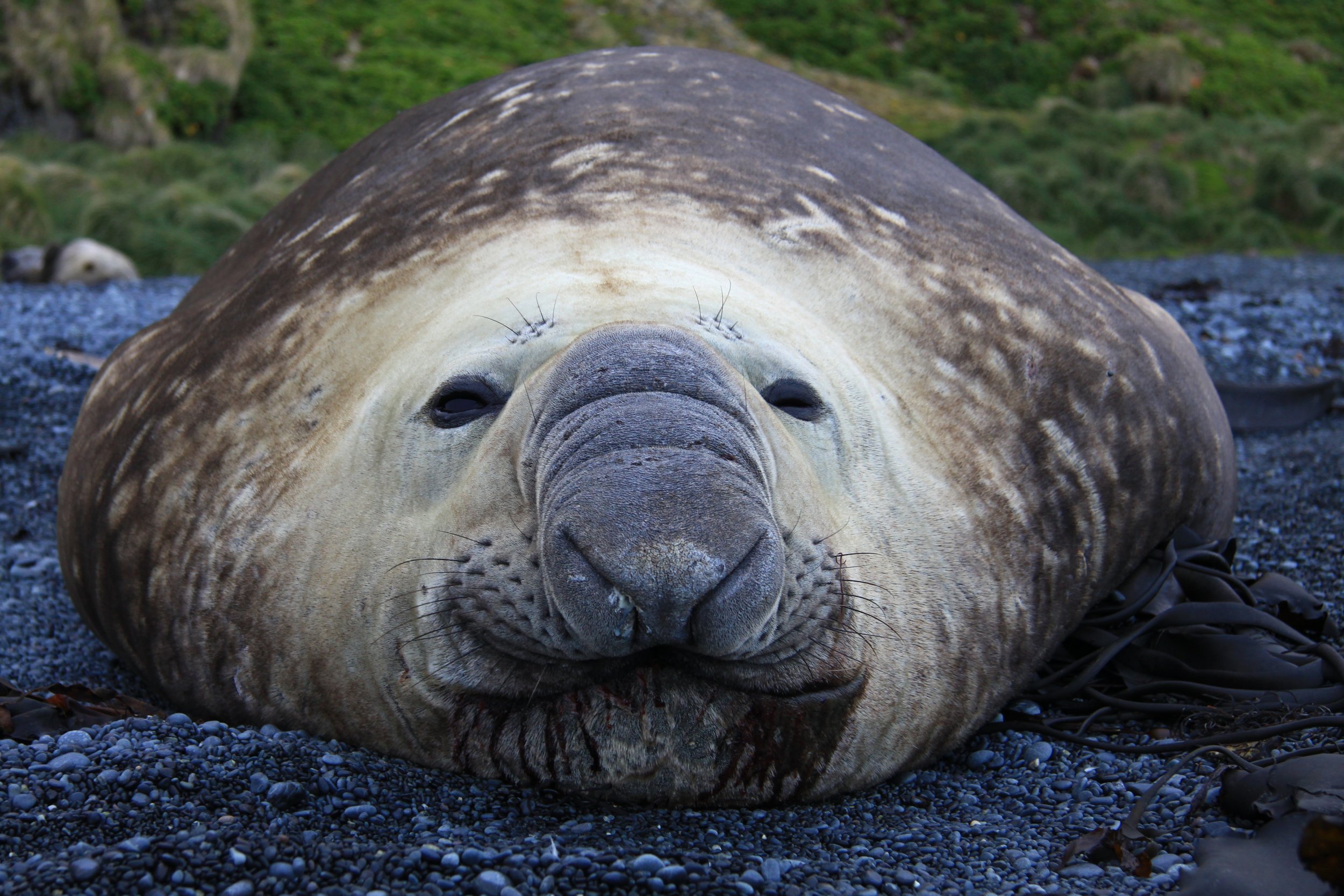
The Seals
Elephant Seals
Southern elephant seals (Mirounga leonina) are the largest of the world’s seals, with males weighing up to 4,000 kg. They have a circumpolar distribution living in the waters of the Antarctic continental shelf, returning to sub-Antarctic islands to breed and moult. From the early 1800s to the early 1900s elephant seals were hunted on Macquarie Island for their blubber, which was rendered down into high-quality oil. Following the cessation of hunting the population recovered to reach a peak of about 110,000, about 10% of the world’s population, however in 1985 the discovery that the Macquarie Island population had been declining at about 2.1% per year since the early 1950s sparked concern and the species is now listed as Vulnerable and Endangered under Commonwealth and State legislation respectively.
Southern elephant seals (Mirounga leonina)
Conservation Status: Vulnerable (EPBC)
Macquarie Island population: ~15,000 cows
Approx global population: 350,000 mature individuals
Fur Seals
During the 1800’s, sealers on Macquarie Island killed approximately 200,000 fur seals for their skins, wiping out the entire breeding population. They were not recorded breeding here again until 1955 and have slowly been increasing in number since. There are three species of fur seal regularly seen on the island, however females from only two species breed here. Hybridisation between Antarctic and Subantarctic fur seals occurs on the Macquarie Island making identification of some individuals difficult. Threats to fur seals include predation by killer whales (Orcinus orca) and New Zealand (Hooker) Sea Lions (Phocarctos hookeri), and entanglement in fishing line and other marine debris. Approximately 400 pups are born on Macquarie Island each year at the northern end of the island, 15% of these are thought to be hybrids. Occasionally pups are found in other areas of the island but this is rare. Males return to the island in September to establish and compete for breeding territories, females return and give birth during November and December. The lactation period varies between the species with pups weaned after 4 months and 11 months for Antarctic and Sub-Antarctic Fur Seals respectively.
Antarctic Fur Seal (Arctocephalus gazella)
Conservation Status: Not listed
Macquarie Island population: ~350 pups per year
Approx global population: 1.6 million
Subantarctic Fur Seal (Arctocephalus tropicalis)
Conservation Status: Vulnerable (EPBC)
Macquarie Island population: 40-50 pups per year
Approx global population: 270,000-360,000.
Long-nosed Fur Seal (Arctocephalus forsteri)
Conservation Status: not listed
Macquarie Island population: Males only
Approx global population: 85,000
No female long-nosed fur seals breed on Macquarie Island, although interbreeding with the other two species has been recorded. Sub-adult and adult males are regularly seen around the coast.
Vagrant Seals
New Zealand Sea Lion (Phocarctos hookeri)
Conservation Status: Not listed
Macquarie Island population: Transient & uncommon.
Approx global population: Estimated to be between 12,000-16,000.
New Zealand sea lions breed on New Zealand’s sub-Antarctic islands such as Dundas Island and the Auckland Island groups, and are one of the world’s rarest sea lion species. Small numbers of mainly juvenile male sea lions are observed on Macquarie Island each year, with no breeding recorded. Their diet is broad, including squid, fish, crustaceans and penguins and seal pups.
Leopard Seal (Hydrurga leptonyx)
Conservation status: Not listed
Macquarie Island population: Vagrant species, individuals seen mainly during winter
Approx global population: Estimated to be at least 100,000 (a decrease from between 220,000-450,000 in the 1980’s).
Leopard seals breed on the Antarctic pack ice and are uncommon winter visitors to Macquarie Island. Numbers recorded on Macquarie Island vary each year, possibly depending on the annual movement and extent of the sea ice. Leopard seals are often seen hauling out on Macquarie Island’s protected beaches along the coast for several days and are also vagrants to other subantarctic islands including Heard Island. Leopard seals eat primarily cephalopods, but will also hunt fish, seabirds (especially penguins) and young seals.






